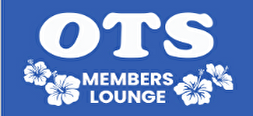In Shodo (calligraphy), there are many types of styles such as Kaisho (square), Gyosho (semi cursive), or Sosho (cursive) which are used for writing Kanji.
In Japan, the Kanji characters, originally from China, were spread in the Yayoi period. “Shodo” was spread as Buddhism was brought to Japan and spread by Shotoku-taishi and Shomu emperor through sutra copying.
There are three types of Japanese characters: Kanji, Hiragana, and Katakana. In Sasagirian, we will teach you Japanese characters step by step so that anyone can experience the world of Shodo.
Shodo is written with the brush and the ink and its world is unlimited. You will have the time to meditate and face the paper. In Shodo it has been said that “Your incorrect posture leads to incorrect handwriting”, which means that your life itself, and your personality will be reflected in your handwriting. We’ll be delighted if you could feel the importance of putting your heart in when writing a character and seeing how Shodo is profound all while feeling the possibilities of brush written characters. Through experiencing Shodo, we hope that the Japanese written characters will be spread throughout the world and people could feel the warmth of brush written Japanese characters.
-
12/27
-
12/28
-
12/29
-
12/30
- in 2 h
- Pre-payment by credit card
| Price |
above 13 years old:
¥0
4 years old - 12 years old: ¥0 |
| Schedule |
Reception procedures |
| Age | 4years old ~ |
| Min. of PAX | 2people |
| Things included in the price |
Calligraphy experience fee |
| Meeting Place |
〒904-0401 1765-8 Nakama, Onna-son, Okinawa. MapCode : 206 351 733*47 |
| Meeting Time |
Please come by the time of your reservation. |
| Important notice |
Capacity of small groups of up to 8 persons. Reservation requires at a minimum of 2 people and at a maximum of 8 people. |
| Cancellation Policy |
In the case of cancellation due to customer's convenience, the cancellation fees will be incurred as follows: |
| Organizer |
Sasagirian (笹桐庵)
Open: from Thursdays to Sundays, 13:00 to 17:00. Closed on Monday, Tuesday and Wednesday. Also closes on Qingming day, Vernal and Autumnal Equinox Days, Obon period of the Japan's old (lunisolar) calendar and New Year holidays. |



